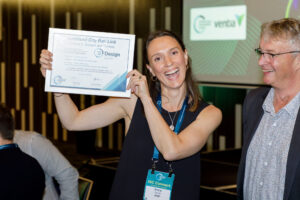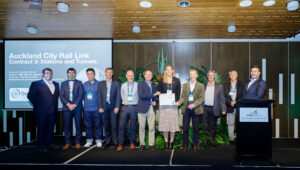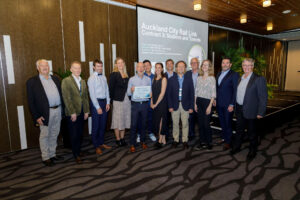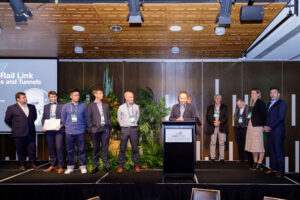Project Description:
The $5.5 billion City Rail Link (CRL) will provide a world-class rail service for Auckland that will have profound and long-lasting benefits for the city. The gains from building a railway tunnel and stations below central Tāmaki Makaurau are immense. Linking the existing dead-end Waitematā Station in downtown Auckland with the Western Line 3.45 kilometres away at Maungawhau and building two new train stations at Te Waihorotiu and Karanga-a-Hape will make the city’s electrified rail network more efficient and catching a train a more attractive and sustainable travel option. Importantly, providing a world standard rail network will reduce Auckland's reliance on cars.
The project has twin running tunnels, two underground stations and work to significantly upgrade two existing stations. It will at least double the capacity of the city’s metro rail network and reduce travel times. This rating covers the majority of the overall CRL project including:
1) The design and construction of the two new underground stations (Te Waihorotiu and Karanga-a-Hape) and the significant upgrade of the existing Maungawhau station, including all station systems.
2) Bored tunnels from Te Waihorotiu to Maungawhau as well as mined and cut and cover tunnels.
3) Connection to the existing North Auckland Line in cut-and-cover tunnels and open trenches.
Rating Highlights:
Energy and Carbon
- Maximising the use of grid electricity during construction to achieve circa 80% reductions compared to diesel generators.
- Using efficient construction machinery such as telescopic excavators for deep excavations, a “loco-tractor” rather than a diesel locomotive for rail systems works and electric tower cranes rather than diesel crawler cranes.
- Specifying a “DALI” lighting control system for the operational stations with sensors that adjust the lights to achieve the exact light level required. This means there is no over-lighting, with automatic adjustments made to compensate for the age of the LED bulbs (which reduce their light output throughout their life) and any daylight or feature lighting that enters the stations. This reduces the lighting energy requirement by 38% and reduces the stations’ operational energy footprint by 7.4%.
Materials
- An 18% reduction in the footprint of the concrete used through replacement of cement with fly-ash. This is equivalent to eliminating over 7,000 truckloads of concrete from the Project.
- Redesigning the Karanga-a-Hape underground station to remove a central adit, reducing mined tunnelling and associated concrete and steel by 11%.
- Reducing the length of the mined tunnels at Maungawhau by 45%, and reducing their width, to minimise use of carbon-intensive shotcrete and reinforcing steel and maximise the use of lower-carbon bored and cut-and-cover tunnels.
Leaving a lasting legacy
The Project is taking a three-pronged approach to delivering positive social outcomes for people who are marginalised in the workforce, with a focus on Mana Whenua, Māori, Pasifika, and youth by:
- Implementing a 16-week paid internship for Māori and Pasifika rangatahi (youth) entering the workforce that provides employment, training and wrap-around support.
- Running a career development, mentoring and pastoral care programme that leads to confident, capable and generous people who have improved career pathways.
Creating supply chain opportunities for Māori and Pasifika businesses, Social Enterprises and Socially Innovative Businesses.
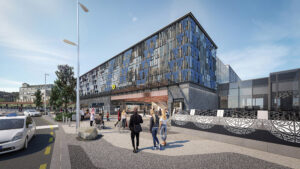
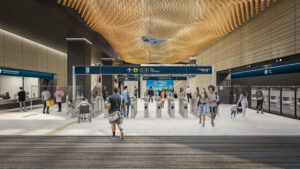
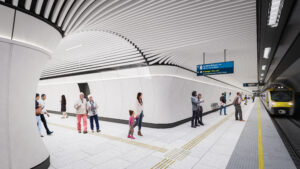
CRL Ltd and Link Alliance implemented a 16-week paid internship for rangatahi (youth), including training and wrap-around support, career development, mentoring and pastoral care programme to create confident, capable people with improved career pathways. They also created supply chain opportunities for Māori and Pasifika businesses, social enterprises and socially innovative businesses.
Sweeney says it has been a privilege to partner with Mana Whenua on many initiatives and to witness the positive and enduring outcomes from this good work.
“It is particularly pleasing to see that for the first time the ISC has incorporated cultural values into its Infrastructure Sustainability technical manual and is now sharing it across Australasia and with its partners around the world,” Dr Sweeney says.
“This is a direct result of our world-first innovation, in partnership with the Mana Whenua Forum, to create a manual, Mahi Rauora Aratohu, to incorporate mana whenua cultural values to guide the project and against which its outcomes could be assessed,” he says.
ISC chief executive Ainsley Simpson says: “The partnership and development of the Mahi Rauora Aratahu manual has not only delivered great outcomes for the CRL project and the people of Tāmaki Makaurau, but have inspired the further development of the IS Rating Scheme related to Indigenous People of the Land.
“At the Council, we have taken significant steps in our latest Technical Manual update to recognise the importance of culture, connection and partnership and shared the CRL experience and action with the infrastructure sector across Australasia and with our international partners.”
Mana Whenua Forum member Edith Tuhimata says: “Te ao Māori has sustainability at its very core and we have a great responsibility to future generations for the way we conduct our businesses and the impacts that has on the environment and the people, the wellbeing of the whenua and he tangata.
“Mana Whenua bring an holistic approach to the CRL project to ensure whakapapa links are acknowledged and the best practical environmental, sustainable, social and cultural outcomes are achieved,” she says.
Dr Sweeney says it has been an honour to ensure te ao Maori values drive our work in building New Zealand’s biggest transport infrastructure project.
